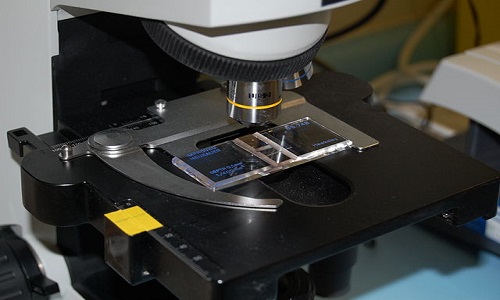Difference Between Urine Analysis And Drug Testing
Urinalysis or simply study of urine is the method of screening the urine of a person to detect normal and abnormal constituents. The process is safe and simple as it is a non-invasive technique, and requires only collection of diurnal urine. Further such process is neither associated with any discomfort nor adverse effects. In this analytical procedure, an array of tests is performed on the urine either for medical or legal purposes (illegal drugs used for purpose of performance enhancement)[1].
The tests usually involve evaluation of colour, density, pH and presence or absence of specific biochemical substances or drugs. The common methods of urine analysis are uroscopy (Physical analysis), by reagent strips (chemical reactions with urine components) and microscopic (immunoassays). Urinalysis is often done either for medical conditions or Drug Testing. Drug testing in urine involves the presence of a drug or its metabolite as per its pharmacological profile. Urinalysis provides an avenue towards medical abnormalities or drug overdose and misuse[1]. A brief of medical conditions associated with urine profile is tabulated as below[1,2]:
| Urine Parameter | Normal Values | Deviated values | Interpretation |
| pH | 7.4 to 7.6 | <4.5 <6.0/6.5>7.6 |
General acidosis in the bodyDecreased absorption of minerals like Copper, Iron Phosphorus and also important vitamins like A,B,E,F and KTissues unsaturated with vitamin C |
| Nitrites | Negative(not found) | Positive(if found)False positive | Urinary tract infectionsUsing phenazopyridine as an adjunct to UTI as an analgesic |
| Leukocytes(white blood cells) | Negative(not found) | Positive(if found) | Presence of bacterial exotoxins or due to an infection called cystitis |
| Ketone bodies | Negative(not found) | Positive(if found) | Diabetes or starvation |
| Glucose | Negative(not found) | Positive(if found) | Known as glucosuria and may indicate diabetes. |
| Bilirubin | Negative(not found) | Positive(if found) | Jaundice, indicating gall bladder dysfunction |
| Blood | Negative, however 100mg/dl is normal | >100mg/dl | UTI or cancer of the urinary bladder |
| Proteins | Negative(not found) | Positive(if found) | Known as proteinuria and indicates glomerulonephritis |
| Colour Evaluation | Colorless | BlackBlueBrown, yellow or goldenWhiteRed | Kidney infection or genetic disease called Alkaptonuria Tryptophan malabsorption Jaundice or dehydration, decreased Vitamin B12 absorptionPyuria or pus cells present Presence of blood |
Apart from these chemical components, and physical characteristics urinalysis serves to detect drugs. Drug testing is performed to evaluate whether drug metabolism is normal, whether a person has been on drug overdose or an individual has consumed drugs for “Doping” purposes. However it can be quite natural that an individual is on a prescribed medication and the drug levels detected is a result of physician prescribed intake[2].
Various factors influence the detection of a drug in one’s urine. The factors include state of hydration of the individual, half life of the drug, dosing frequency, route of administration of the drug. Sometimes to elicit performance enhancement synthetic components which mimic physiological substances are used. Example of these are synthetic steroids, testosterone or erythropoietin which are all considered as illegal drugs if detected in urine and the individual fails to show that it is a physician prescribed administration. The advantage and disadvantage of drug testing is narrated as in Table 1[2].
| Advantage | Disadvantage |
|
|
The following table (Table 2) provides the summary of such drugs being tested for presence in urine[2,3].
| Drug Class | Cut Off Limits (ng/dl) | Used For | Detected in Urine |
| Amphetamines | 1000 | Euphoria, stimulant | Till 2 days of intake |
| Barbiturates | 200 | As antidepressants, sedatives | Till 2 days to 3 weeks depending on half life |
| Benzodiazepines | 200 | Sedatives | Till 3 days (therapeutic dose)or 4 weeks( chronic intake) |
| Cocaine | 300 | stimulant | Till 4 days |
| codeine | 300 | analgesic | Till 2 days |
| Cannibinoids like marijuana | 100 | hallucinogen | 2-7 days (if used as a single dose) while 1 to 2 months in case of prolonged use. |
- Difference Between Vascular Cambium and Cork Cambium - November 1, 2023
- Difference Between DevOps and Developer - September 10, 2023
- Difference Between Acute Gastritis and Chronic Gastritis - April 3, 2023
Search DifferenceBetween.net :
Leave a Response
References :
[0]Hardman JG, Limbird LE, eds. Goodman and Gilman’s pharmacological basis of therapeutics. 10th ed. New York: McGraw Hill. 2001:621
[1]Urine drug testing in the clinical laboratory: Approved guideline. Wayne, PA: National Committee for Clinical Laboratory Standards (Document T/DM8-A, Vol. 19, No. 6), 1999.
[2]Braithwaite RA, Jarvie DR, Minty PS, et al. Screening for drugs of abuse. Opiates, amphetamines and cocaine. Ann Clin Biochem. 1995;32:123-153.
[3]http://en.wikipedia.org/wiki/Urinalysis

